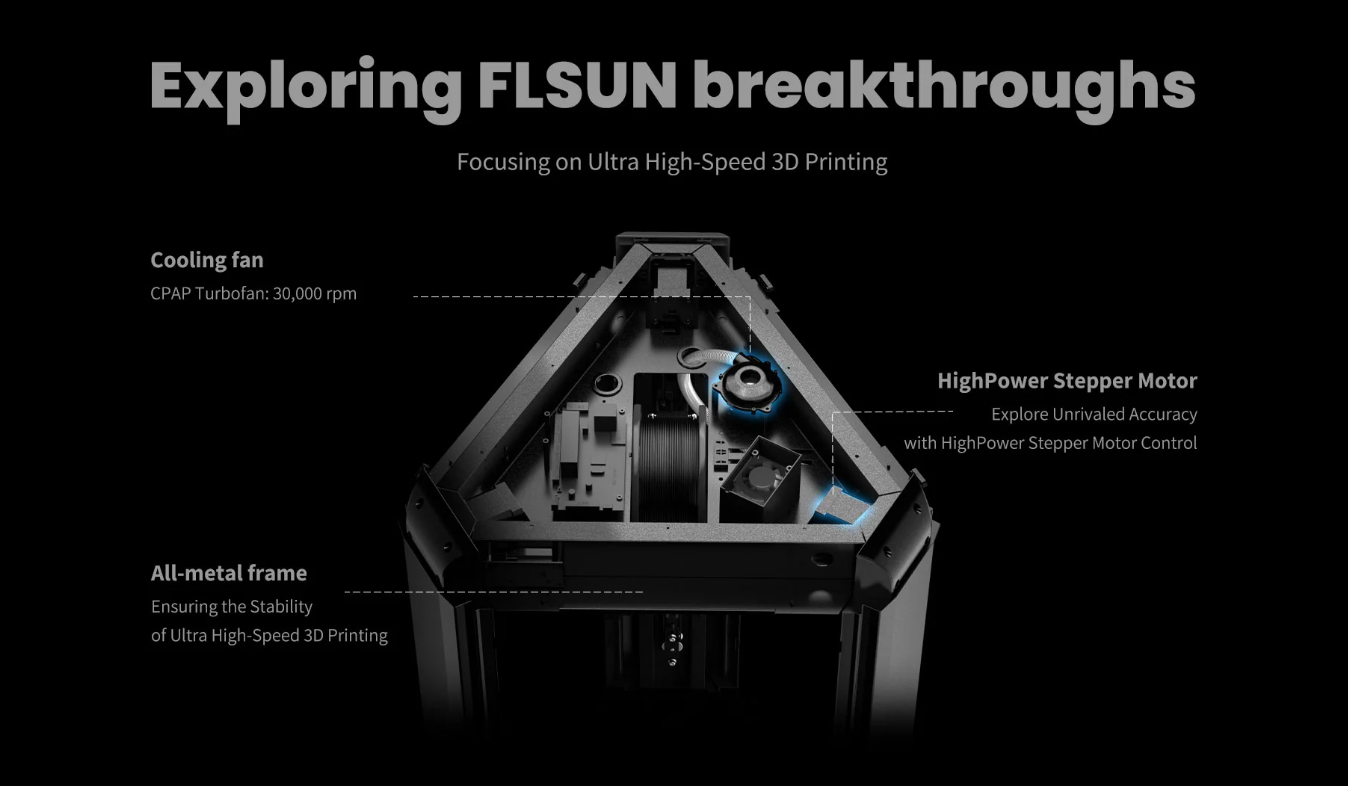Delta printers are not highly prevalent, and a production delta equipped with Klipper firmware was previously unavailable. The FLSUN T1 stands out as the initial delta 3D printer preloaded with Klipper firmware, prompting my eagerness to assess its performance.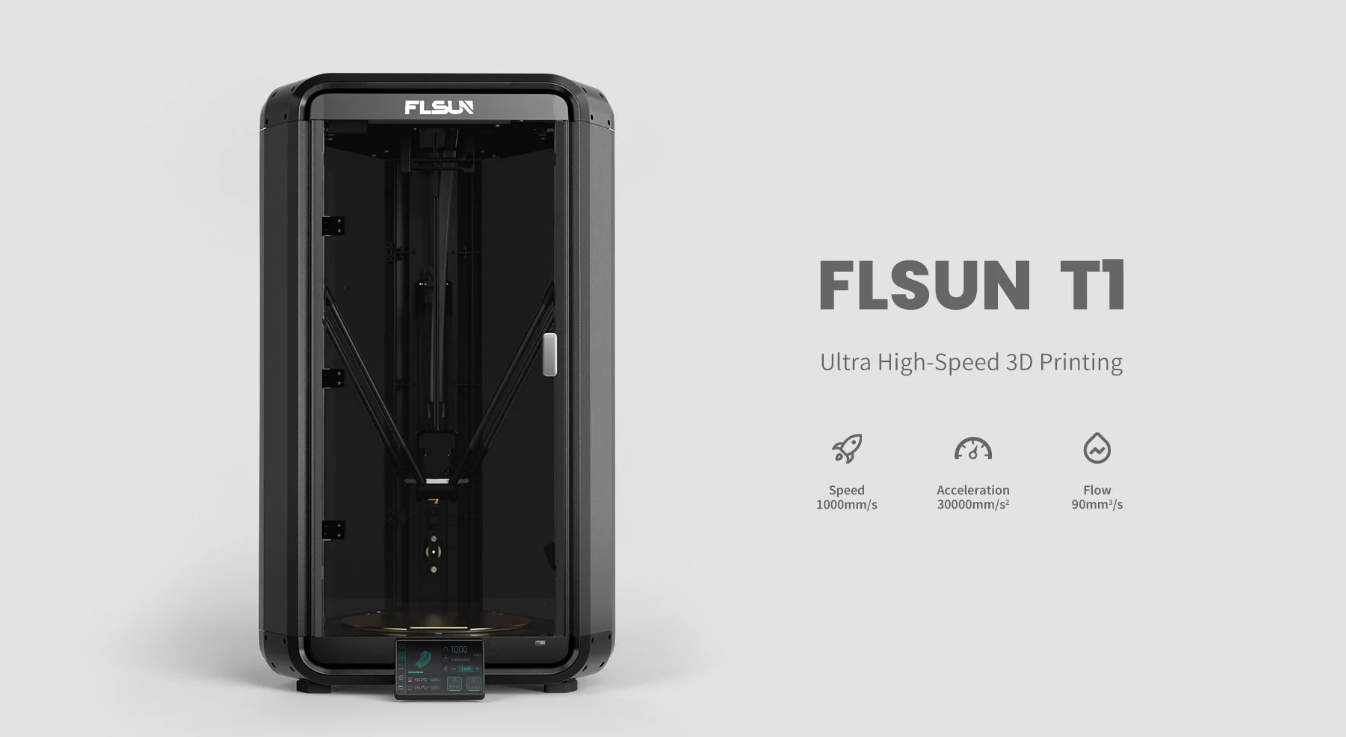
The FLSUN T1 has a substantial size, featuring a direct-drive extruder, a bi-metal heat break, and a hotend combo capable of printing up to 300C at speeds reaching 400mm/s, which is quite impressive.
Having previously reviewed the FLSUN Super Racer, which shares similarities with the T1 post-SR Upgrades, notable changes introduced by the T1 prompt a thorough examination. Additionally, a comparison with the new entrant, the Bambu Lab X1 Carbon, renowned for its speed and a smaller printing volume, will be insightful.
FLSUN T1 Shipping and Packaging
The FLSUN T1 arrives in a sizable cardboard box, adequately protected by foam on all sides. The packaging is divided into two compartments, neatly presenting the printer components. Assembly requires approximately 30 minutes, with the manual offering clear instructions, making the process straightforward.
FLSUN T1 Design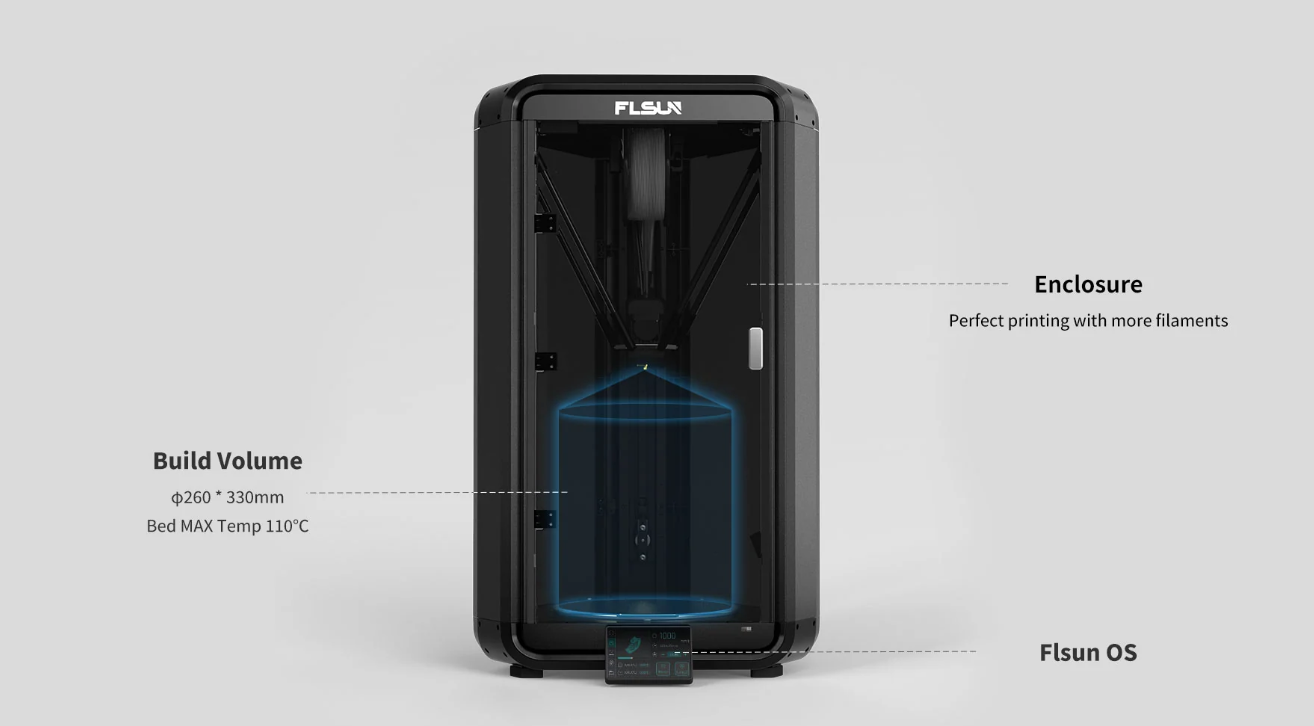
Familiarity with the FLSUN Super Racer reveals a similar aesthetic in the FLSUN T1. While the overall machine size is slightly larger than the SR, it doesn’t represent a significant increase. However, the Z-axis demands substantial space, and with the spool holder installed, the printer exceeds one meter in height. This necessitated taking lower-quality pictures with a phone due to space constraints in my photo corner.
The spool holder, akin to the Super Racer, falls short in performance. The filament spool encounters friction on the metallic bracket, posing challenges for different spool sizes.
FLSUN T1 Specs
- Model: FLSUN T1
- Printing Size: 300*410mm (Highest Point)
- Molding Tech: FDM
- Nozzle Diameter: 0.4mm
- Layer Height: 0.05-0.3mm
- Precision: +0.15mm
- Nozzle Type: Single Nozzle
- Environment Temperature: 5-40°C
- Nozzle Temperature: ≤300°C
- Hotbed Temperature: ≤110°C
- Filament Support: PLA/PLA+/ABS/PETG/WOOD/TPU/PC/NYLON(Need dried)
- Printing Speed: Max 400mm/s
- File Format: STL/OBJ/AMF/3DS
- Slice Software: Cura(recommend)/Simplify3D/Prusa Slicer/Ideamaker
- File Format: G-code/UFP (Previewable model)
- Working Mode: Website/Flsun Speeder Pad
- Data Transfer: WIFI/U disk
- Voltage: Input AC 115V-230V Output DC 24 V
- Power: 450W
- Leveling Type: Auto-level
- Filament Detection: Yes
- Extruder Type: Direct Extruder
- System: FLSUN system 1.0
- Printing Volume: 300x410mm
While the printing volume expands significantly to 300x410mm, the machine’s overall size remains comparable to the FLSUN Super Racer. This is advantageous, considering the build volume of a delta printer, making it occupy less table space compared to larger format Cartesian printers, albeit demanding more Z space.
However, fitting the printer on a shelf might pose challenges, necessitating ample space consideration.
Concerning print volume, it’s crucial to note that the actual usable height is approximately 390mm, as the Z volume doesn’t scale conventionally for a regular 3D printer. The central bed area offers slightly more volume than the sides, a typical characteristic of delta 3D printers.
Additionally, the maximum XY volume for square models is around 210x210mm, but to ensure safety, it’s advisable not to exceed 205x205mm.
The FLSUN T1 effector features a compact dual-gear direct-drive extruder setup, complemented by a 4510 radial fan. The fan, with fins resembling the Hemera extruder heatsink, contributes to efficient cooling of the bi-metal heat break.
While a smaller heatsink could have reduced the printhead’s weight, the chosen size maintains manageable noise levels. Part cooling relies on a pair of 4010 radial fans, adept at efficiently cooling layers during printing without introducing excessive noise. Notably, the SLS printed fan mounts enhance the overall design.
Three LED strips beneath the effector illuminate prints, controllable via the web interface. The entire effector weighs around 400 grams, suitable for fast printing.
A detailed examination of the BMG gears reveals no notable improvement over those in the Super Racer extruder. However, considering the direct-drive setup and the short filament path, filament grip is sufficient.
The hotend features a customized Volcano clone heat block, securely screwed into the effector to ensure stability during rapid printing. Notably, the adoption of a bi-metal heat break enhances thermal performance, enabling printing up to 300C without concerns about PTFE tube damage.
A silicone sock insulates the hotend and is secured by a screw to prevent detachment during fast printing. However, the use of “glue” around the nozzle raises questions, serving no apparent purpose beyond the silicone sock and not as a filler for the nozzle.
The nozzle, a CHT Volcano clone, promises a higher flow rate owing to its larger melt area. Flow rate tests will provide more insights.
Dual Axis Linear Guides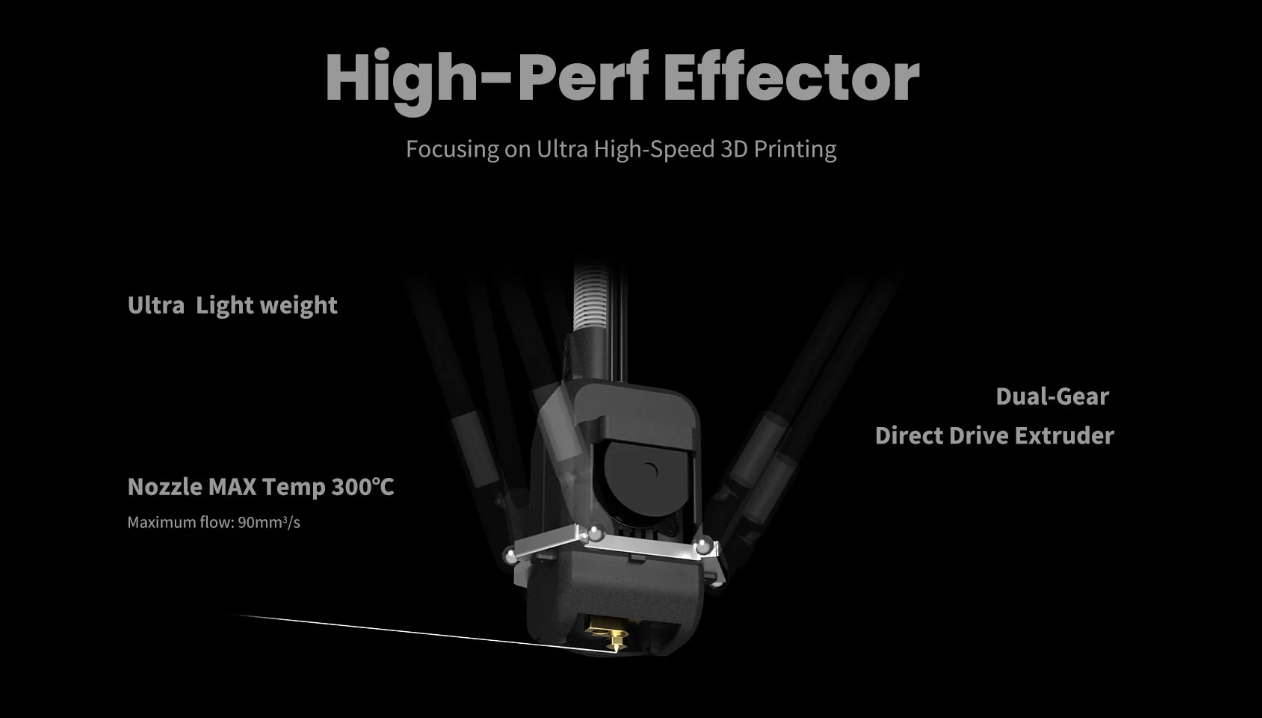
Deviating from MGN linear rails in the FLSUN Super Racer, the T1 opts for a pair of linear guides for each axis. Initial concerns about this motion system have been allayed, as it operates quietly and appears smoother than linear rails.
Time will reveal the longevity of these linear guides, with potential challenges arising if replacement involves the entire aluminum extrusion unit, an expensive prospect.
32-bit board with silent stepper motors
The FLSUN T1 houses an MKS Robin Nano 2.0 board, akin to the FLSUN Super Racer, featuring the GigaDevice GD32F103 chip and four removable TMC2226 stepper drivers.
An 80mm fan cools the stepper drivers, maintaining a low noise level. Adjacent to the board, a secondary breakout board streamlines connections to the print head, facilitating easy assembly and maintenance.
The inclusion of a filament runout sensor, also serving as a strain relief for wires, adds convenience. However, the filament path within the sensor lacks adequate constraint, requiring some adjustment for smooth filament passage.
Silicone washers between stepper motors and metallic attachments contribute to resonance mitigation, reducing small vibrations during rapid movements.
The 7-inch touchscreen accompanying the FLSUN T1 impresses with vibrant colors and a capacitive interface. The Klipper-powered FLSUN Speeder Pad, hosting the printer’s “brains,” enhances the overall user experience.
An aluminum heatsink on the chip powering the Speeder Pad adds a touch of sophistication. The operating system, reportedly Ubuntu 20.04.4 LTS, runs on a Quad Core Allwinner R818 chip with 1GB of RAM and 16GB of internal storage. The backside of the screen may generate some heat, but no cause for concern has been identified.
A slight reservation pertains to the potential complexity of re-flashing the EMMC chip in case of system reinstallation, lacking explicit guidance in the manual regarding graceful shutdown procedures.
The Speeder Pad includes three USB ports and a barrel power connector, with a minor concern about the connector’s long-term stability. The USB ports facilitate direct printing from an external storage unit.
While the plastic cover is removable, caution is advised due to easily breakable plastic clips. The integrated LEDs behind the screen, though super-glued, pose no significant issue.
A plastic tablet stand is included for holding the touchscreen upright, with the unfortunate absence of an option to attach the screen to the printer. The Speeder Pad’s placement at the bottom limits accessibility if the printer is placed on the floor, a trade-off for controlling the printer through the web interface.
The Klipper Screen interface on the Speeder Pad impresses with a rich set of features and a custom theme by FLSUN.
Klipper Firmware out of the box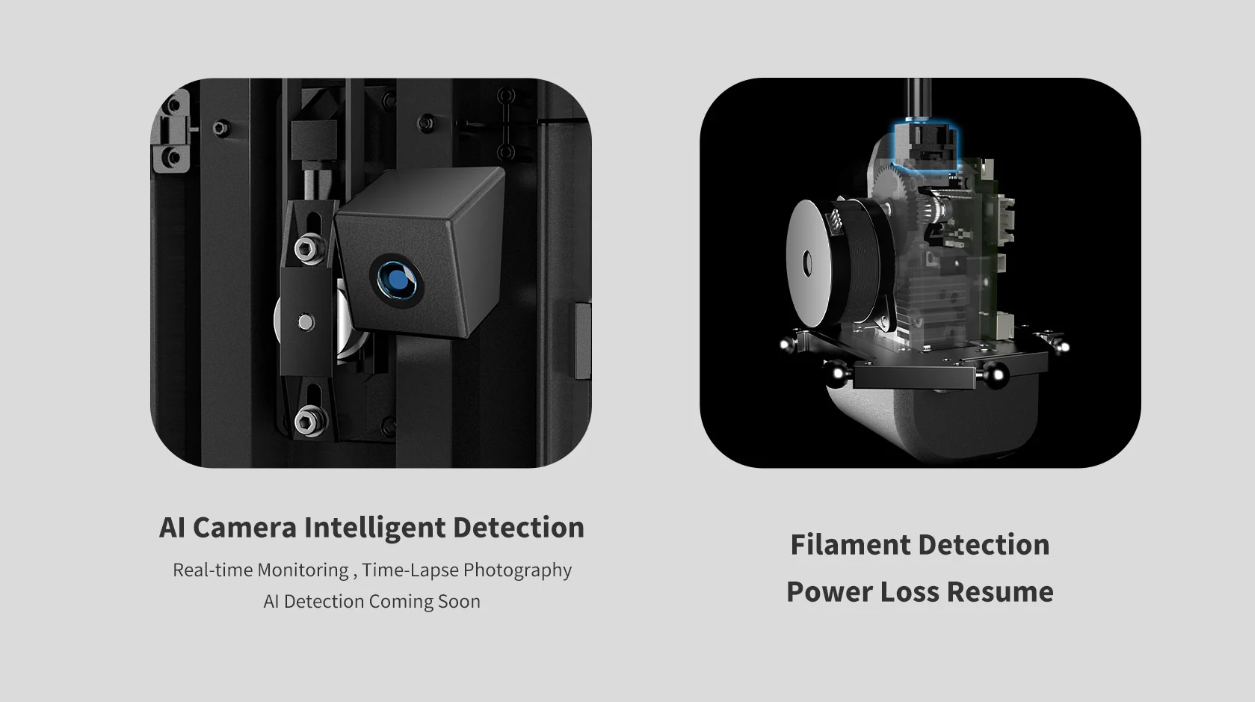
A standout feature of the FLSUN T1 is the pre-installed Klipper Firmware, a significant advantage for fast and high-quality printing. Klipper brings features like Pressure Advance and Input Shaping, contributing to enhanced print speed and quality without additional expenses.
The inclusion of the Mainsail web interface allows convenient Wi-Fi connectivity for remote printer control via browsers on computers or mobile interfaces on phones. Integration of a webcam for remote monitoring or timelapse video generation is straightforward.
The printer.cfg file, while pre-configured for most printing scenarios, reveals imperfections in PID tuning and input shaper settings. Calibration, however, is a manageable task for users seeking optimal performance.
A concern arises regarding firmware upgrades over time, as the approach for handling newer Klipper builds remains unclear. Caution is advised before clicking the Upgrade button, with a recommendation to research and minimize potential issues.
In line with 2022 standards, the FLSUN T1 features a factory-installed textured PEI magnetic flex plate. This print surface ensures good model adhesion during printing, coupled with easy model removal post-printing by flexing the surface.
The illuminated logo on the printer’s top is a nice touch, with the ability to control the light via software.
The absence of a small drawer, a feature in the FLSUN Super Racer, is a minor drawback. However, it’s not a critical omission given the infrequent need for the drawer.
Integration of Klipper and Mainsail enables temperature graph monitoring, providing additional insights into the printer’s performance.
PID tuning discrepancies observed during printing at 260C highlight a need for user calibration to ensure optimal print quality.
Power Draw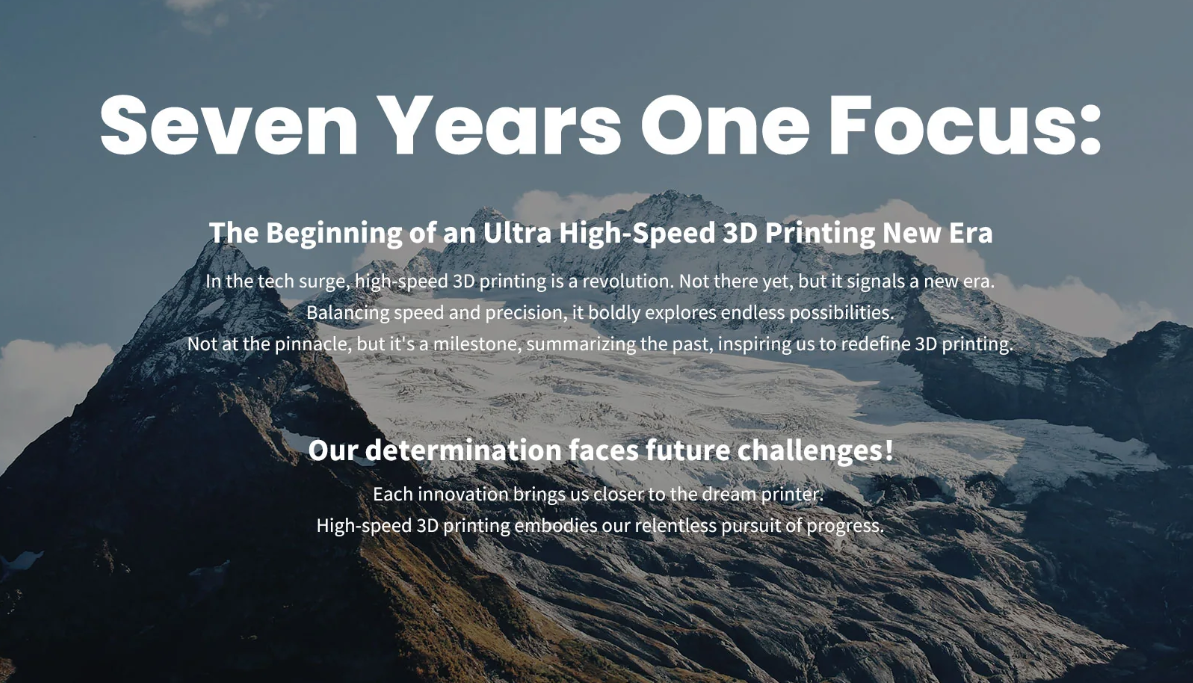
Power consumption measurements reveal an idle power draw of approximately 18W. During hotend and heatbed heating, the FLSUN T1 draws around 330W. Upon commencing printing, power draw stabilizes at approximately 95W. These measurements were obtained using a Blitzwolf smart power socket.
Bed Temperature Uniformity
Testing the bed temperature uniformity with a FLIR Camera indicates acceptable results. While the thermistor in the middle of the plate records a slightly higher temperature than the printing surface side, the impact on print quality is likely minimal, given the PEI flex plate’s effective adhesion.
FLSUN T1 Noise Levels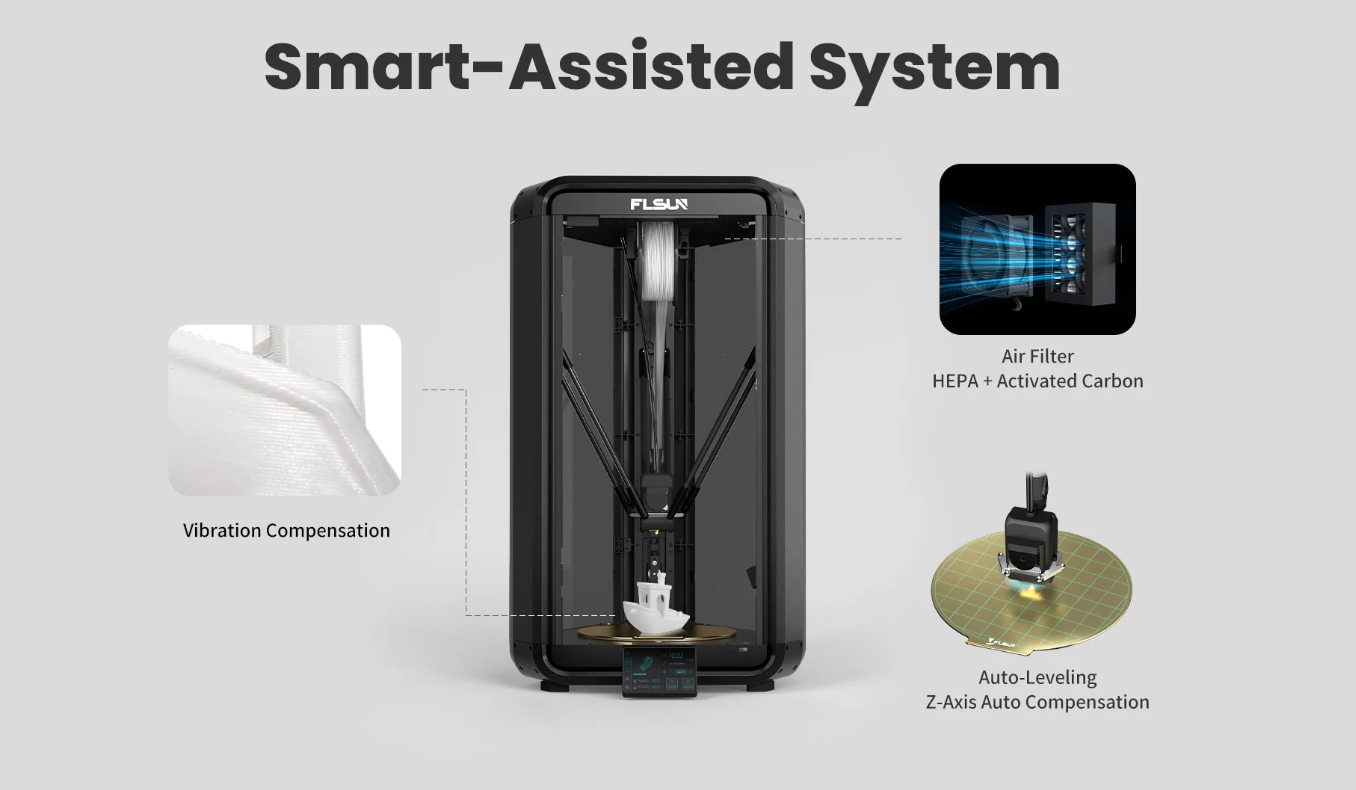
Surprisingly, the FLSUN T1 exhibits commendable noise levels. Compared to the Bambu Lab X1 Carbon, it proves less noisy, with fan noise and linear guide operation contributing to the overall sound profile. Notably, the T1’s fans and linear guides operate quietly, with occasional minimal noise during fast travel movements.
Customized Prusa Slicer profiles tailored for the FLSUN T1 were developed during the review period, enhancing compatibility with the stock printer. Calibration adjustments, particularly in flow rate, remain essential based on filament characteristics.
Validation of printer functionality involved printing the included nut and bolt file from the provided USB drive. The print, while successful, highlighted potential tolerances that may require attention.
A 200% calibration cube, printed with stock calibration settings, showcased sharp corners, consistent extrusion, and smooth layers, indicating satisfactory performance.
Prints of popular test models, such as the Cali-Dragon and the Tug Boat in TPU, revealed acceptable results. Stringing, attributed to higher temperatures, was observed but remained within acceptable limits.
Conclusions
The FLSUN T1 impresses with its performance as a fast and capable delta 3D printer featuring Klipper Firmware out of the box. While not achieving the advertised 400mm/s printing speeds, it remains one of the fastest options available.
The pricing consideration is nuanced, with the retail price of $899 appearing on the higher side. Early bird prices of $699 and $750 are closer to justifying the printer’s worth, considering its comprehensive features. The $850 price point may be challenging, particularly with alternatives like the Bambu Lab X1 Carbon, priced slightly higher but offering additional features.
For users prioritizing a larger printing volume, an open-source firmware, and a delta 3D printer, the FLSUN T1 presents a compelling choice. Despite falling short of the claimed 400mm/s, it remains a speedy machine.
The FLSUN T1 signifies a positive shift in 3D printing innovation, moving beyond Ender 3 clones and challenging the status quo. While budget printers still hold relevance, improvements in the segment are encouraging, with manufacturers like FLSUN paving the way for enhanced capabilities.
Price
The FLSUN T1, with its performance and Klipper Firmware, offers value for users seeking a swift and capable delta 3D printer. Despite price considerations, especially at the retail level, the printer’s










